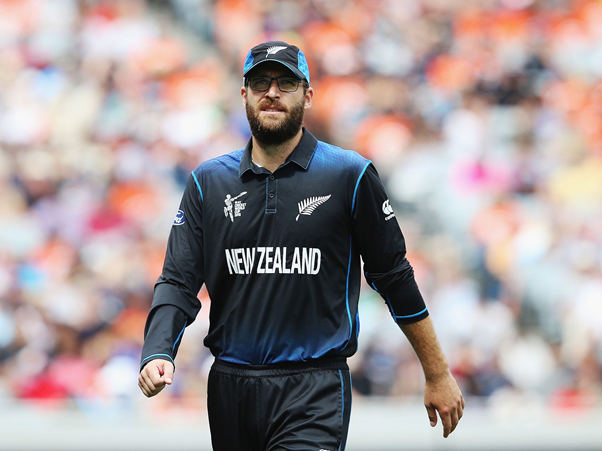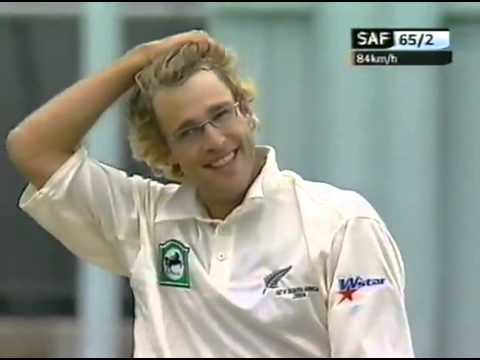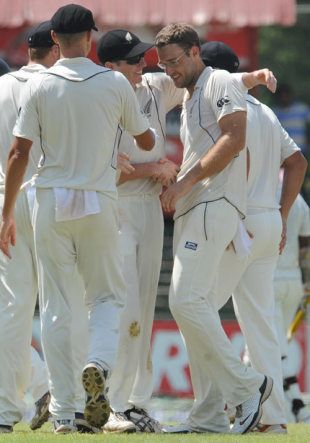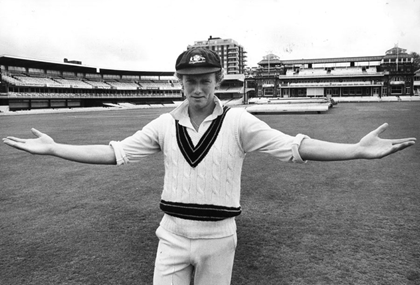
Thread:
Daniel Vettori (born #onthisday 1979) came in as a 18-year-old with scholarly looks ... and made his way to becoming a senior statesman of #Cricket
Daniel Vettori (born #onthisday 1979) came in as a 18-year-old with scholarly looks ... and made his way to becoming a senior statesman of #Cricket

It was a long, long journey.
By the time he called it a day, half his life had been spent on the cricket ground.
By the time he called it a day, half his life had been spent on the cricket ground.

There were changes on the way.
The long locks fell away early, the boyish angularity of the cheeks was filled up with the heaviness of experience; the glasses too changed from the light metal frames to rather forbidding, wide spectacles.
The long locks fell away early, the boyish angularity of the cheeks was filled up with the heaviness of experience; the glasses too changed from the light metal frames to rather forbidding, wide spectacles.

The chin started smooth, gradually sprouted outgrowth of stubble and with time changed into a rather serious beard. 

In cricketing terms he crossed the whole nine —22 perhaps? — yards. The left-arm spin picked up guile on the way to becoming one of the best in the world 

The left-handed batting metamorphosed from handy tail-end to meaty middle-order, for a while nearly the best Test batsman of the team. 

The burdens of batting and bowling were enhanced with the mantle of captaincy, and the erstwhile teenaged stripling led the country with the same steely determination that was forever sheathed under his polite exterior. 

Injuries weighed him down, and the responsibility of selection was also thrust on his shoulders. He took all that in his stride, and then some more. 

It would not be stretching it too far to say Daniel Vettori has been one of the most important Kiwi cricketer of the last two decades. And certainly the most understated in the world when weighed against his surprisingly colossal achievements. 

In World Cup he leapt in the air to bring off a one-handed blinder to dismiss Marlon Samuels, the entire side ran to him in unbridled delight. The man himself almost squirmed uncomfortably in the limelight that his 36-year-old athleticism had surprisingly exposed himself to. 

He has never been one for excessive show of emotion or celebration. Hence one continues to do a double take on looking at his record. A collection of 4,531 runs at exactly 30 runs per innings and 362 wickets at 34.36, six hundreds and 20 five-wicket hauls from his 113 Tests. 

That places his unassuming self in the select bracket of some of the greatest all-rounders of all time. Only Kapil Dev and Ian Botham have scored more than 4,000 runs and captured more than 300 wickets. 

One thinks of Vettori and wonders when he accomplished all that. He remains second only to Richard Hadlee in the impact he has left on the cricketing landscape of the lovely nation under the long white cloud. The greatest spinner produced by the country — ever. 

He was the youngest New Zealander to play Test cricket, and then One Day cricket as well. Soon, he became the youngest spinner to 100 wickets. 

Gradually his feats became more than just the flashes of a youngster. The drift became more pronounced; the spin and bounce more controlled and canny. 

If the first forays to the crease were accompanied by spirited endeavour but limited ability, soon technique and strokes were being added to his batting skills. He graduated to a batsman with a fantastic 137 against Pakistan. 

He celebrated his 200 wickets with an 82-ball century in the same Test match, the fastest by a Kiwi batsman before McCullum cut it down by a third. And then he got Kumar Sangakkara caught at mid-wicket to complete the fantastic double of 3,000 runs and 300 wickets. 

In 2010, he became just the second Kiwi cricketer to appear in 100 Test matches. Vettori had moved on from being a boy cricketer with a faint resemblance to Harry Potter into a man, a noble one—the sort of whom Nature might stand up and say to the world, “This was a man.” 

Along the way he refused to appeal for a run out when he felt he was in the way of the batsman’s rush back to the crease. 

With time the hamstring acted up, the back shut down, the Achilles rebelled. The career was derailed, tried to limp back only with partial success. It was pure determination which enabled him to play the World Cup, a key member in the side’s incredible march to the final. 

The superb display of the side in the tournament, followed by the heartbreak in the final, ensured one important thing. Vettori’s departure from the cricket world was not as understated and unsung as most of his career had been. 

• • •
Missing some Tweet in this thread? You can try to
force a refresh




















